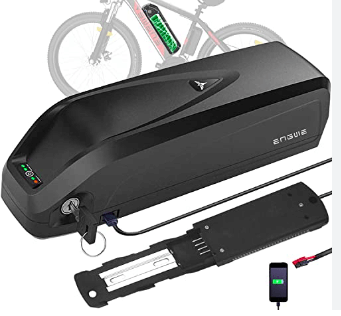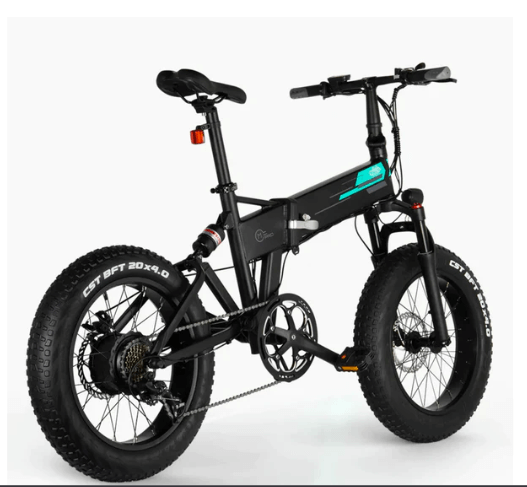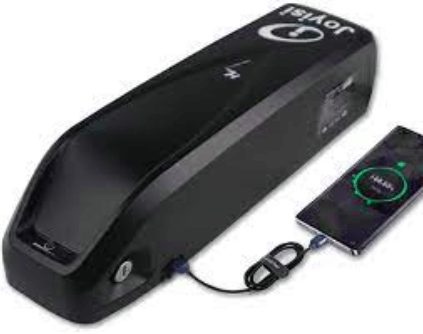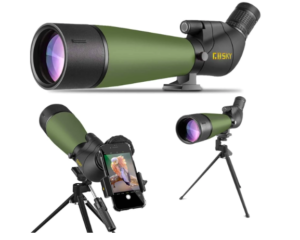
Are e-bike batteries allowed on airplanes?
The International Air Transport Association (IATA) allows e-bike batteries with a capacity of 100 watt-hours (Wh) or less as carry-on or checked luggage. Batteries with a capacity greater than 100 Wh are only permitted as checked baggage and must be packed in a way that avoids short-circuiting. Additionally, the batteries must be protected from harm and not be left loose in the luggage.
Some flights may have stricter requirements, so it is always wise to check ahead of time to prevent any problems at the airport. It is also advised that the battery be unplugged and that the e-bike be packed securely.
It’s also worth noting that certain nations have more stringent laws on e-bike batteries, so make sure to verify the legislation of the country you’re visiting.
Why Are Lithium Batteries A Problem On Aircraft?
Lithium batteries can be dangerous aboard aeroplanes because they can overheat, catch fire, or even explode under certain situations. These issues stem from the chemical characteristics of lithium-ion and lithium-polymer batteries, which are frequently used in computers, cellphones, and cameras.
Here are some of the reasons why lithium batteries aboard aircraft might be problematic:
Thermal Runaway:
Lithium batteries can experience “thermal runaway,” which occurs when an internal short circuit or other damage causes the battery to discharge energy in the form of heat. This heat can then ignite the flammable electrolyte inside the battery, resulting in a fast-spreading fire.
Extremely High Energy Density:
Lithium batteries have a high energy density, which means they can store a lot of energy in a small and lightweight form. While this is useful for portable equipment, it also means that if a battery fails, a substantial amount of energy may be released in a short period of time, raising the danger of fire or explosion.
Physical Damage Probability:
Lithium batteries are vulnerable to physical damage, such as punctures or crushing. Short circuits and thermal runaway can occur if the battery’s internal components are damaged.
Changes in air pressure and temperature:
Variations in air pressure and temperature in aircraft cabins can impact the stability of lithium batteries. Extreme cold or heat might change the chemical interactions within the battery, potentially causing malfunctions or damage.
Cargo Capacity:
Many lithium batteries are handled as cargo in passenger aeroplane cargo holds. If a fire breaks out in the cargo hold as a result of a battery problem, it may go undiscovered for some time, allowing the fire to spread before being found.
Firefighting Options Are Limited:
Due to the peculiar nature of battery fires, typical firefighting procedures may not be successful if a lithium battery fire erupts aboard an aeroplane. Fires caused by lithium batteries may reach high temperatures and emit poisonous gases, making them difficult to extinguish.
Detection Difficulties:
Detecting a lithium battery that is overheating or malfunctioning can be difficult, especially if the battery is contained within a gadget or container. This might cause a delay in responding to possible risks.
Because of these safety concerns, aviation authorities such as the International Civil Aviation Organisation (ICAO) and the Federal Aviation Administration (FAA) have implemented measures to reduce the dangers associated with transporting lithium batteries on aeroplanes.

How To Calculate The Battery Size?
The capacity (measured in ampere-hours, Ah) of the battery that best matches your unique application must be determined when calculating the proper battery size. The battery size you require is determined by factors such as your device’s power consumption, desired runtime, and the efficiency of the battery technology. Here’s how to calculate battery size in general:
Calculate Power Consumption:
Estimate or measure your device’s power usage in watts (W) or milliwatts (mW). This might entail inspecting the device’s specs or use a power metre.
Determine Desired Runtime:
Determine how long you want the item to operate on battery power before it has to be recharged or replaced. This is commonly given in hours (h).
Determine your energy consumption:
To determine the overall energy usage in watt-hours (Wh), multiply the power consumption by the required runtime. This is the quantity of energy your battery must supply throughout the specified time period.
Power Consumption (W) x Runtime (h) = Energy Consumption (Wh).
Take into account battery efficiency and voltage:
Battery efficiency is not 100%; some energy is wasted owing to internal resistance and other causes. Divide the computed energy usage by the battery’s efficiency (often between 0 and 1). Consider the battery’s nominal voltage (V) as well, because capacity is frequently quoted in ampere-hours at the nominal voltage.
Energy Consumption (Wh) Adjusted = Energy Consumption (Wh) / Battery Efficiency
Determine Battery Capacity:
Divide the modified energy consumption by the nominal voltage of the battery to calculate the needed battery capacity in ampere-hours (Ah).
Adjusted Energy Consumption (Wh) / Battery Nominal Voltage (V) = Battery Capacity (Ah).
Choose a Battery:
Choose a battery with the same or slightly more capacity than the calculated capacity. Remember that actual battery performance might vary depending on factors such as temperature, discharge rate, and age.
Consider Peukert’s Law (for Lead-Acid Batteries):
Consider Peukert’s Law while working with lead-acid batteries, which accounts for the fact that the capacity of a lead-acid battery diminishes as the discharge rate increases.
Remember that these figures are only estimates, and that other factors like as the battery’s self-discharge rate, depth of drain, and ambient conditions can all have an influence on its performance. For more precise size, see the battery manufacturer’s specs and instructions.
How are e-bike batteries produced?

Lithium-ion batteries are commonly used in e-bike batteries. Because lithium-ion batteries are rechargeable and have a higher energy density than other types of batteries, they are ideal for use in e-bikes.
The production of e-bike batteries generally comprises multiple stages:
- Obtaining raw materials:
The process begins with obtaining the raw materials needed to create the battery, which include lithium, cobalt, nickel, and other metals.
- Cell generation:
After that, the raw components are processed to make individual battery cells. The electrodes and electrolyte are often housed in cylindrical or rectangu
- Cell formation:
The individual cells are then put together to form a battery pack. Connecting the cells in series or parallel to get the correct voltage and capacity is part of this process.
- Evaluation:
After that, the battery pack is tested to ensure that it fits the requirements and safety regulations.
- Shipping and packaging:
After passing testing, the battery is packed and transported to the e-bike manufacturer for integration into the e-bike.
It is crucial to remember that numerous types of e-bike batteries exist, and the production process varies correspondingly.
Furthermore, e-bike batteries are often rechargeable, which adds another degree of complexity to the production process.
To reduce environmental concerns, batteries should be appropriately recycled at the end of their life cycle.
What exactly is lithium-ion technology?
Lithium-ion (Li-ion) technology is a form of rechargeable battery in which lithium ions serve as the primary charge carrier. It has a high energy density, a low self-discharge rate, and no memory effect, making it suited for use in a variety of applications such as e-bikes, cellphones, laptop computers, and electric vehicles.






